Burmese Heddle Pulleys: Functional and Aesthetic Weaving Tools
Textiles are hand crafted in many counties around the world using a loom that hold the stretched vertical threads (warp), also known as surface threads or ends. As they must be tight, they are normally stronger than the horizontal threads (weft). The vertical warp threads facilitate interweaving by guiding the horizontal ones alternating over and under. A cord or wire heddle is another basic part of a loom, as each of the vertical threads pass through the eye in the heddle’s center and are suspended on the loom’s shaft so each of the vertical threads can be separated and enable…
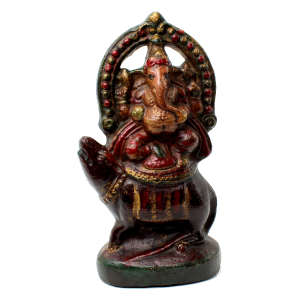
Indian Terracotta Statues: A Colorful Cultural and Religious Tradition
“ Most terracotta pieces were and are still created by local potters in regions throughout India with each locale having a unique style, distinct designs and individual content. They have long been a very significant part of rural life in India where they represent the wishes and beliefs of village inhabitants for a better life. Essentially they “…stand for the longings and aspirations of the village folk who still retain the age-old mystic belief that guided the life of the people more than five thousand years ago.” (Pottery India) They grace individual home altars, are commonly displayed in the outskirts…
The Allure of Shiwan Pottery
Traditional, decorative, and utilitarian Chinese ceramic pieces produced at the Shiwan kilns in Foshan City located in the southeastern Chinese Province Guangdong that borders Hong Kong and Macau are well recognized and respected around the world for their fine modeling, vivid expression, and colorful glazes. Kilns in this area date back more than 4,000 years and reached their height of production during the late Ming (1368-1644) and Qing (1644-1912) periods. They are also famous for producing household and utilitarian items as well as finely modeled figures with vivid expressions and vibrant glazes. The most well-known and serviceable pieces are the…
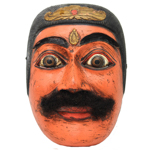
Indonesian Dance Masks (Topeng): Spiritually Connecting the Community
People are always impressed by the variety and aesthetic appeal of Indonesian masks when they first encounter them, but they are usually unaware of their meaning, history, and cultural importance. When masks were first used in Indonesia is debated, but they probably were rooted in its ancient animistic past. Animists believe that spirits and gods are present in all things, and most scholars believe the first masks used world wide in ceremonies and rituals by “primitive” peoples were intimately tied to their animistic beliefs combined with ancestor worship where dancers were considered as communicators to and interpreters of the gods,…
The Emergence of Nanhai Guanyin, Guanyin of the South Sea
One of the more popular Chinese depictions of Guanyin, especially during the Ming and Qing Dynasties, is the seated Bodhisattva in her “Cave of the Tidal Sound” (Chaoyin Dong) on Mount Putuo (Putuoshan) on the island of Putuo, which means “beautiful white flower” in Sanskrit. It is a small island in the East China Sea renown for centuries for its beauty, spirituality and natural wonders that include grottoes, mystic caves, exotic rock formations, exquisite landscapes, tranquil valleys, golden beaches, and religious sites of temples and monasteries. Guanyin is believed to reside in the Cave of the Tidal Sound in front…
Hindu Home and Temple Shrines and Religious Practices
A home shrine or altar room or space is the most important part of a household in the Hindu tradition. It is dedicated to house statues and images of the gods and goddesses who are believed to protect the family and engender good fortune. While daily prayer, rituals, ceremonial worship, and devotional homage (puja) are practiced there by family members who pray together, the shrine/altar serves an even greater purpose: it is a sacred space where all family actions and decisions are made. Puja, (pooja, poojah) a Sanskrit meaning homage, adoration, reverence, honor, and worship, is the Hindu worship of gods, spirits, or…
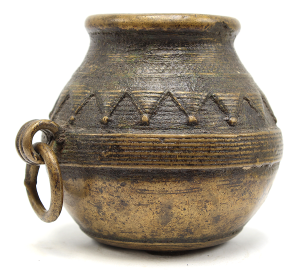
Dhokra Metal Smiths: Retaining Primitive Techniques with Unfailing Success
Antique brass vessels, figures, and religious objects have long been the specialty of Dhokra (Dokra) tribal metal smiths from Eastern India. The Dhokra are a nomadic group that over several millennia settled in different sections of Indian provinces and ended in tight knit communities in Orissa (now called Odisha), West Bengal ,and Eastern India. They continue to this day to use the same primitive art of metal craft based on the lost wax technique of metal casting that was used in India by the Indus Valley civilization almost 4500 years ago. Their identification with this primitive technique has resulting in the name Dhokra being used generically for “a variety of beautifully shaped and decorated brassware products created by the cire perdue or “lost wax” process. (Smith and Kochhar) The long and labor intensive lost wax process comprised of several steps, and starts with creating a clay…
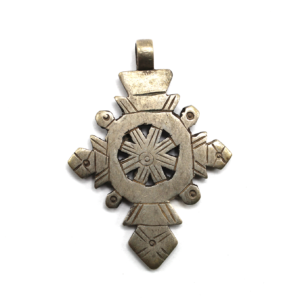
The Evolution and Brilliance of Ethiopian Crosses
The Ethiopian Orthodox Church has retained a strong role in the lives, culture, and religion of its members from the time Coptic Christians arrived from Egypt in the 4th century A.D. to the current day. Ethiopia was the second country after Armenia to accept Christianity as its official religion, and Ethiopians remain among the world’s staunchest adherents to the Christian faith. Although it initially fully embraced Christianity, the Ethiopian Orthodox Church forged its own cultural and religious path and maintained its independence from European influence. Until the early 15th century, it remained isolated from the outside world. In the 16-17th…
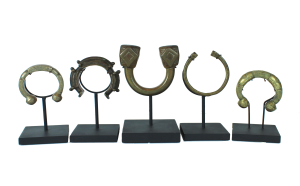
Manillas: Former West African Trade Currency
A manilla is an open metal bracelet given to newborns throughout Caribbean cultures where they are known mostly as a bangle. It is a treasured item that is essential for baby christenings or for a first birthday and worn until it is outgrown. Bangles are meaningful family treasures that are saved and passed on to offspring, and they are an item of prestige for Caribbean women of all races, an adored piece of fashion jewelry, and an article meant to store wealth, especially in the case of gold, silver, and highly valued antique pieces. Today, they adorn the wrists of…
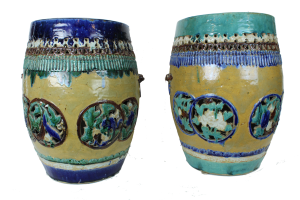
The Ubiquitous and Charming Chinese Ceramic Stools
The Chinese stool is a modest seat that has been used since ancient times. A stool was first found on a bronze Eastern Zhou vessel (776-256 BCE) and folding ones reached China via nomads by the late 2nd century. Early Buddhist art of the 4th-5th century often showed monks and bodhisattvas on a stool meditating, they were depicted in 6th century tombs to offer prestige and comfort in the hereafter, and Tang Dynasty (618-906) noble women were often shown sitting on them. By the Song Dynasty (960-1279), they were molded into round seats and used in homes and gardens. Houses…
Consecrating Wooden Images to Imbue Them with A Life Force
Carved figural statues have historically been an integral part of cultural and religious life in China, providing spiritual inspiration, solace, and dedication to the country, local communities, families, and individuals. The statues fulfilling these functions were never created to be solely objects of decoration; rather they were used for didactic purposes for illiterate populations, and as a expression of Ancestor Worship to honor and maintain ongoing relationships with the previous generations. Chinese homes, clan halls, temples, and public community buildings contained altars and shrines to honor and venerate familial ancestors and a multiplicity of gods and deities. These dedicated altars…
Queen Mother of the West Xiwangmu : Taoism’s Iconic Female Sovereign of Immortals
The Taoist deity Queen Mother of the West Hsi Wang Mu or Xiwangmu is revered as the most significant female deity in the Taoist pantheon and is also highly regarded in Chinese Popular Folk Religion where she is seen as a major magical deity with a huge cult following. Her immeasurable powers include her complete control over life and creation as well as death and destruction. On a individual level, she determines the lifespan of every living being, and on a broader scale she initiates the onset of major disasters. She has experienced many historical transformations and is known by…
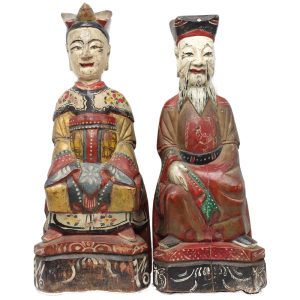
Tudi Gong: The Taoist and Popular Religion Earth God
Followers of Taoism and Chinese Popular Folk Religion believe the cosmos consists of three domains: Heaven (the Celestial Domain), Earth, and the Underworld with each domain being inhabited by a conglomeration of significant gods and goddesses. The Jade Emperor (the Ruler of Heaven), presided over the Celestial domain and, in turn, ruled a network of local House and City Gods. The most significant and ubiquitous Earth gods are the Kitchen God who presides over individual households, and Tudi Gong, the “Earth God” who is guardian of local villages and communities. Tudi Gong is also often referred to as the “Land…